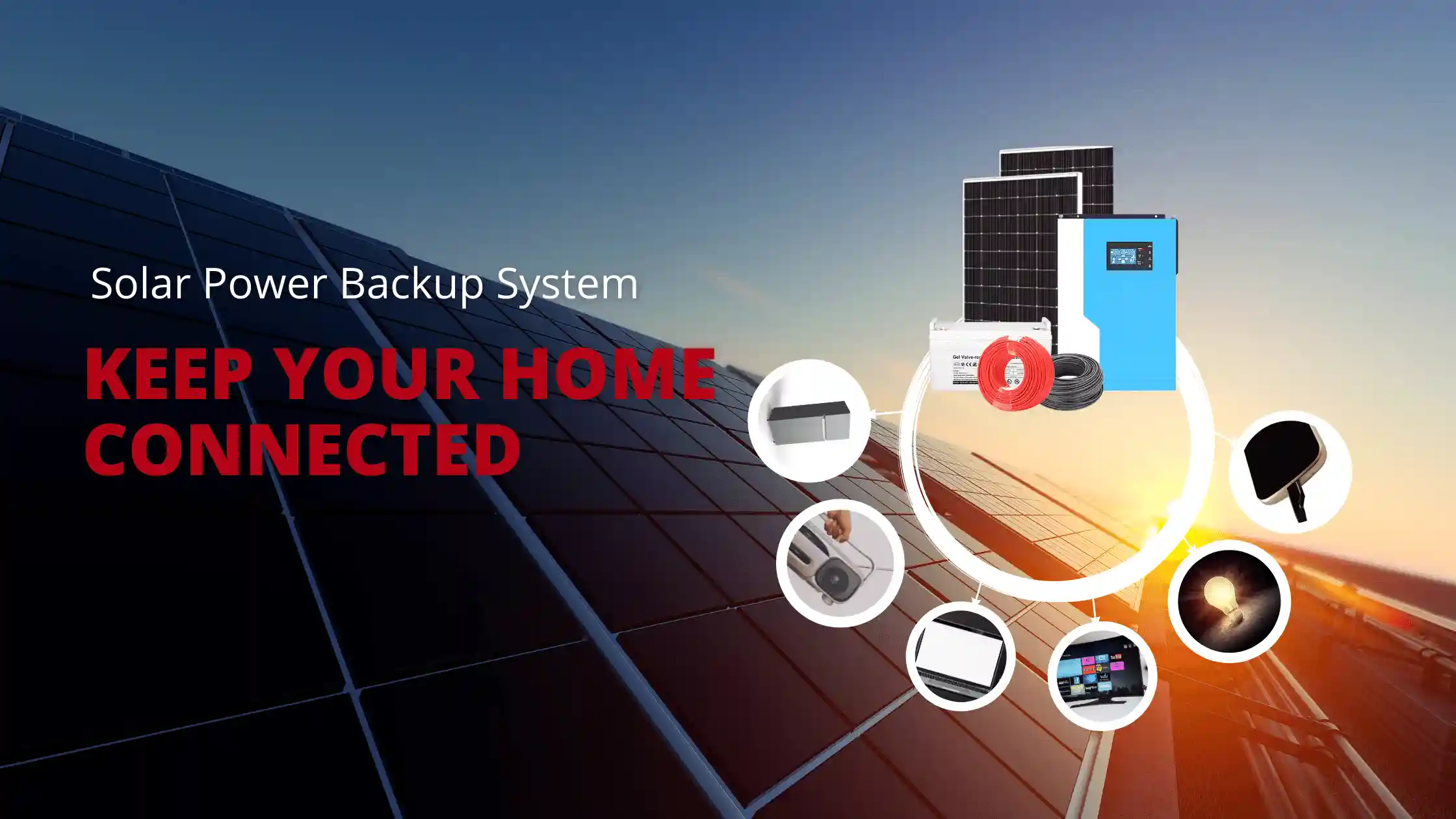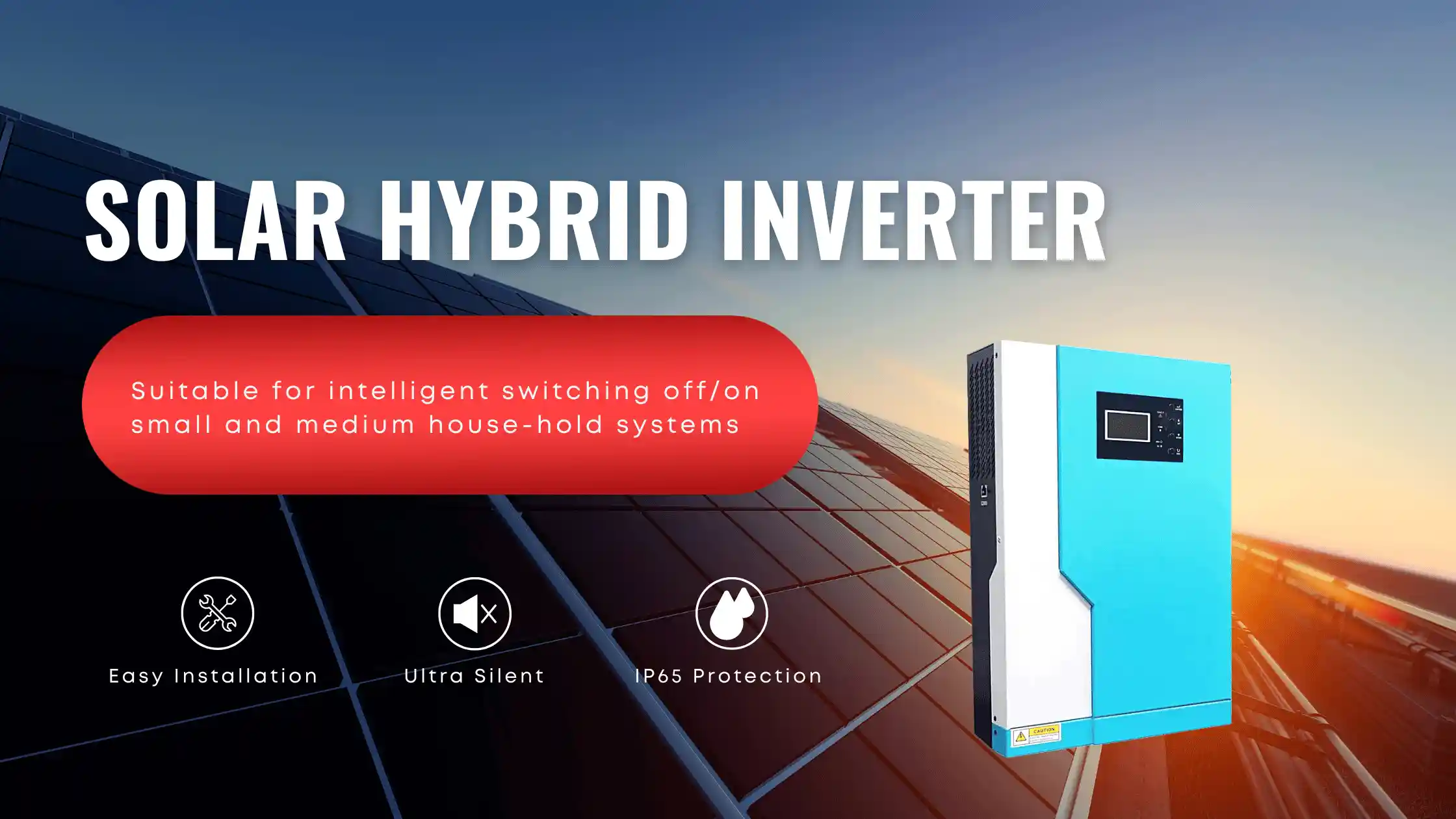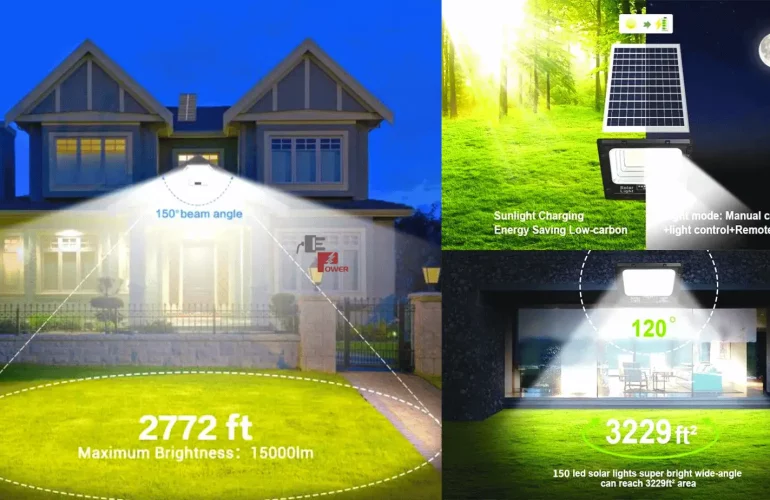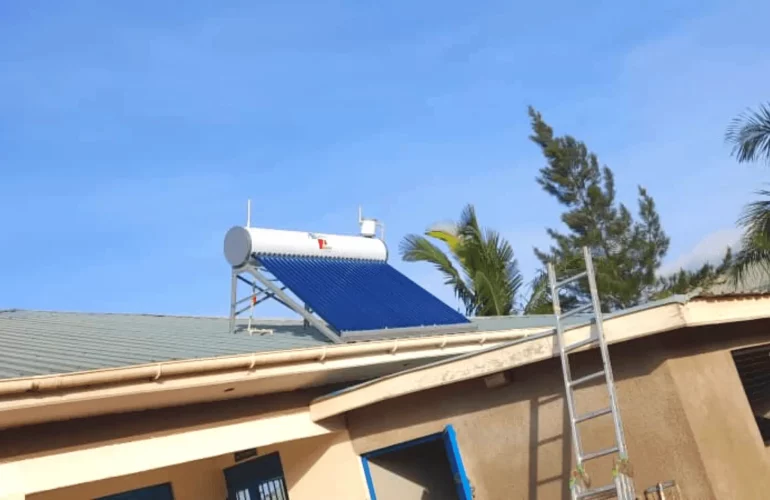How Solar Inverters Can Save You Money on Energy Costs in Kampala
Solar inverters are becoming increasingly popular as a cost-effective solution to reduce energy costs in Kampala. With rising electricity prices and the need to transition to renewable energy, many households and businesses are turning to solar inverters as an alternative energy source. By harnessing energy from the sun, solar inverters can help you save money on energy costs while reducing your carbon footprint. In this article, we will explore how solar inverters can save you money on energy costs in Kampala.
Solar Inverters in Kampala Explained
A solar inverter is an important part of a solar energy system. Solar inverters transform direct current (DC) power generated by solar panels into alternating current (AC) electricity used by homes or businesses. AC electricity is grid-compatible and can power a wide range of electrical gadgets.
Solar inverters are available in a variety of sizes and kinds, depending on the size of the solar energy system, the energy demands of the family or company, and the installation location. String inverters are the most prevalent form of solar inverter used in small to medium-sized solar energy installations. Microinverters, on the other hand, are intended for bigger solar energy systems and can increase system performance in partially shadowed areas. Hybrid inverters may function as both a string inverter and a battery inverter, allowing you to store extra energy generated throughout the day for use during low-light times or power outages.
Solar inverters are critical components of efficient and dependable solar energy systems. The DC power generated by solar panels cannot be used directly by families or businesses without the use of a solar inverter. Solar inverters guarantee that solar energy systems are compatible with the electrical grid and can assist to lower electricity costs by allowing solar energy to be used to power electrical appliances.
Overview of energy costs in Kampala
Kampala, Uganda’s capital city, has had tremendous issues in supplying its citizens with dependable and inexpensive electricity.
The high cost of energy has been a major source of concern for both homes and companies, with many unable to pay their exorbitant electricity bills. The national energy grid, which is powered by hydroelectric power, has also had difficulties, such as frequent power outages and load shedding.
To address these difficulties and lessen the country’s dependency on hydroelectric electricity, the Ugandan government has been investigating alternate energy sources, including solar power.
Despite these limitations, the growing availability of solar inverters and other renewable energy options gives Kampala optimism for a more inexpensive and dependable energy future.
Importance of finding cost-effective solutions to energy consumption
Energy consumption is an important component of contemporary life, and finding cost-effective methods to minimize energy usage is critical. As the world’s population expands, so does energy consumption, and traditional energy sources, such as fossil fuels, are finite and finite. As a result, developing cost-effective energy consumption solutions is vital to reducing the negative impact of energy use on the environment and human health.
The decrease in energy costs is one of the most significant advantages of discovering cost-effective solutions to energy use. Many families and companies spend a significant portion of their money on energy expenses. It is feasible to considerably lower energy costs by using cost-effective solutions to energy use. For example, switching from standard incandescent lights to energy-efficient LED bulbs can cut power use and save money over time.
Moreover, cost-effective energy consumption solutions can assist lower the carbon impact. The dominant source of energy is fossil fuels, and their burning emits greenhouse gases into the atmosphere, leading to climate change. It is feasible to minimize the demand for fossil fuels by implementing energy-efficient technology, hence lowering carbon emissions.
Another key advantage of low-cost energy solutions is the creation of new work possibilities. The renewable energy business is quickly expanding, and the adoption of cost-effective energy-saving measures can help create jobs in this area. Additionally, many of these positions are highly skilled and well-paying, which can assist to raise people’s living standards.
Furthermore, the adoption of cost-effective energy-consumption measures can increase energy security. Conventional energy sources like oil and gas are vulnerable to supply chain interruptions, which may lead to price increases and energy shortages. It is feasible to lessen reliance on traditional energy sources and increase energy security by using energy-efficient technology and renewable energy sources such as solar and wind.
Talk To Our Experts Now
The Advantages of Solar Inverters in Kampala
Solar inverters are becoming increasingly popular in Kampala as the demand for alternative energy solutions develops. Solar inverters are critical in the conversion of solar energy into electricity that can be utilized to power homes and businesses. They offer several benefits, making them a cost-effective and long-term answer to Kampala’s energy demands.
Here is a list of the benefits of solar inverters in Kampala.
- Lowered Energy Bills: One of the most significant benefits of solar inverters is its ability to dramatically lower energy expenses. Solar inverters may create electricity by capturing solar energy, which can then be utilized to power homes and businesses, decreasing dependency on the grid. This, in turn, results in huge energy cost reductions.
- Environmental Sustainability: Solar inverters contribute to lower carbon emissions and environmental sustainability. The city of Kampala’s reliance on nonrenewable energy sources contributes considerably to environmental deterioration, including air pollution and climate change. Solar inverters assist to lower the carbon impact by supplying clean electricity from the sun.
Improved Energy Efficiency: Solar inverters are very efficient and may generate a large amount of power. They are one of the most energy-efficient alternatives available since they can convert up to 98% of the solar energy they receive into useful power.
Minimal Maintenance: Solar inverters need less maintenance, making them an affordable option for Kampala residents and companies. Solar inverters, unlike traditional power sources, do not require routine maintenance to perform properly.
Dependable Power Supply: Solar inverters provide dependable power supply even during power interruptions. Solar inverters store surplus energy generated during the day and use it at night or during a power outage to keep your house or company powered.
Improved Property Value: Installing a solar inverter may greatly raise the value of your house. Solar inverter properties are in great demand in Kampala because they provide cost-effective and sustainable energy solutions.

Factors to Consider Before Investing in a Solar Inverter in Kampala
Buying a solar inverter is a great method to reduce energy bills and convert to sustainable energy. Nonetheless, various variables must be considered before making any investing selections. In this essay, we will look at the important elements to consider when purchasing a solar inverter.
Trends of Energy Consumption
The type and amount of solar inverter you require are heavily influenced by your energy usage habits. You should evaluate your daily energy requirements, peak energy use, and energy consumption during off-peak hours. This information will assist you in determining the optimum size of solar inverter to satisfy your energy requirements.
Solar Inverter Type and Size
It is critical to select the correct kind and size of solar inverter to provide best performance and financial benefits. When selecting a solar inverter, you should examine the size of your solar panels, the type of inverter you want, and your energy usage habits.
Installation and Maintenance Costs
Another important element to consider before purchasing a solar inverter is the cost of installation and maintenance. You should examine different installation and maintenance charges to locate the best offer. Before making any financial decisions, you should also evaluate the installation procedure and the maintenance needs of various solar inverters.
Solar Exposure
When purchasing a solar inverter, it is critical to evaluate how much sunshine your area receives. You should evaluate your location’s sun exposure and determine whether it is sufficient to sustain solar energy generation.
Do You Want a Hybrid Inverter?
Types of Solar Inverters Available in Kampala
Solar inverters are critical in converting solar energy into useful power. Solar inverters have become a popular alternative for households and businesses as Kampala strives to convert to renewable energy. In Kampala, there are three primary types of solar inverters, each with its own set of pros and cons.
- Inverters for Strings
String inverters are the most frequent and cost-effective form of solar inverter in Kampala. They function by converting direct current (DC) power generated by solar panels into alternating current (AC) electricity suitable for usage in your house or company. String inverters are intended to manage a sequence of solar panels, which means that if one panel is shaded or not producing at full capacity, the performance of the entire string might suffer. String inverters, on the other hand, are perfect for systems with similar panels and no shadowing. - Microinverters
Microinverters are a newer form of solar inverter that has grown in popularity in Kampala because to its capacity to tolerate shade and various panel orientations. Microinverters, as opposed to string inverters, are mounted on each solar panel and convert DC current into AC electricity directly on the panel. This implies that each panel runs independently, allowing for optimal energy output even when some panels are shaded or generating at less than full capacity. Microinverters, on the other hand, are more costly than string inverters and require more maintenance. - Hybrid inverters
Hybrid inverters combine string and battery inverters, allowing solar energy to be used during the day and stored energy to be used at night or during power shortages. They function by converting the direct current (DC) power generated by solar panels into alternating current (AC) electricity for immediate use in your house or company, as well as charging batteries for later use. In places with frequent power outages or poor grid connections, hybrid inverters are excellent. Hybrid inverters, on the other hand, are more expensive than string inverters and require more maintenance.
Steps to Installing a Solar Inverter

Installing a solar inverter is an excellent method to save money on electricity while also lowering your carbon impact. While the procedure may appear overwhelming at first, you can install your solar inverter and begin reaping the advantages of renewable energy with the appropriate steps and advice. The following are the steps for installing a solar inverter:
- Determine Your Energy Needs
The first step in installing a solar inverter is to determine your energy requirements. Determine how much and when you utilize energy each day. This information will assist you in selecting the appropriate size and kind of solar inverter for your needs. - Choosing the Best Solar Inverter
After determining your energy requirements, you must select the best solar inverter for your house or company. String inverters, microinverters, and hybrid inverters are three types of solar inverters. Each kind has advantages and cons, so it is critical to research and choose the best type for your needs. - Find a Reputable Installer
When you’ve decided on the best solar inverter, you’ll need to find a reliable installation. Seek for an installer that has experience and a strong reputation for producing high-quality results. Ascertain that the installer has the required certificates and licenses to install solar inverters.
Install the Solar Panels
You must first install solar panels on your roof or other locations with direct sunlight before installing the solar inverter. The solar panels will create electricity, which will be converted into useable energy by the solar inverter.- Set up the Solar Inverter
You may now install the solar inverter after you have installed the solar panels. The solar inverter will be connected to the solar panels and your home’s electrical system by the installation. They will also guarantee that the inverter is properly and safely fitted. - Maintaining and Monitoring Your Solar Inverter
After installing your solar inverter, you must routinely check and maintain it to guarantee that it is operating at top efficiency. Keep an eye on your energy use and the functioning of your solar panels. Cleaning your solar panels on a regular basis can also assist to guarantee their full effectiveness.
Ready To Buy A Solar Hybrid Inverter?
The Possible Difficulties of Utilizing Solar Inverters
While solar inverters offer numerous benefits, there are some potential challenges to consider. Some of these challenges include:
- Absence of sunshine: Since solar inverters require sunlight to generate energy, they may not be suited for regions with low sunlight or those are shaded by trees or buildings.
- High initial investment costs: The cost of obtaining and installing solar inverters might be too expensive for certain families or companies.
- Maintenance requirements: In order to work at peak efficiency, solar inverters must be serviced on a regular basis. This involves cleaning the panels, ensuring the wiring is properly connected, and inspecting the panels for damage.
- Inverter compatibility: Inverters may not be compatible with existing solar panel systems in some situations, requiring you to replace your present system in order to utilize a solar inverter.
- Dependency on weather conditions: Because solar inverters are weather dependent, they may not produce as much power on cloudy or wet days.
- Battery maintenance: If you choose a solar inverter with battery storage, you will need to keep the battery in good working order.
- Energy consumption patterns: While picking a solar inverter, it is critical to analyze your energy use habits. If you use a lot of energy during peak hours, you may require a more powerful solar inverter or a more expensive battery storage solution.
Therefore, while solar inverters provide various advantages, it is critical to examine the potential drawbacks before purchasing one. Solar inverters may bring significant advantages and energy cost reductions with regular maintenance and careful consideration of your energy use habits.
Conclusion
Finally, investing in a solar inverter may give significant benefits such as better energy efficiency, less dependency on the grid, and financial savings. Therefore, before making any investing decisions, it is critical to evaluate the criteria listed above. Solar inverters remain a cost-effective choice that may save you money on electricity expenditures as Kampala continues to investigate renewable energy sources.
If your looking for solar products in Uganda click here




